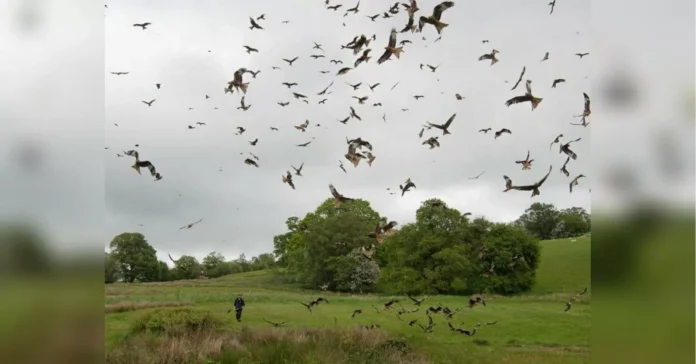According to scientists, there is a new discovery that challenges our understanding of the evolution of life on Earth. Fossils of organisms, dating back almost 570 million years, have been found in the coastal regions of Canada. These organisms, although resembling animals, are not considered to be true animals yet. This discovery has opened up a whole new realm of possibilities and has sparked a debate among scientists about the origins of these mysterious creatures.
The fossils were discovered by a team of researchers from the University of British Columbia, who were studying the sedimentary rocks of the Mistaken Point Ecological Reserve in Newfoundland, Canada. The rocks, which are believed to be around 579 million years old, contain imprints of soft-bodied organisms that have long puzzled scientists. These organisms, known as Ediacarans, have been found in various locations around the world, but this is the first time they have been found in Canada.
The Ediacarans are named after the Ediacara Hills in Australia, where the first fossils were discovered in the 1940s. They are believed to have lived during the Ediacaran period, which lasted from 635 million to 541 million years ago. This period is considered to be a crucial time in the evolution of life on Earth, as it marks the transition from simple single-celled organisms to more complex multicellular life forms.
The discovery of these fossils has caused a stir in the scientific community, as they challenge the traditional view of the evolution of animals. For years, it was believed that the first animals evolved during the Cambrian explosion, which occurred around 541 million years ago. However, the discovery of these Ediacarans, which predate the Cambrian explosion, suggests that the evolution of animals may have started much earlier than previously thought.
So, what exactly are these Ediacarans and why are they not considered to be true animals? These organisms are believed to have lived in shallow marine environments, where they attached themselves to the ocean floor and fed on organic matter. They ranged in size from a few millimeters to over a meter in length and had a variety of shapes and forms. Some had a disc-like shape, while others were frond-like or even tube-like.
One of the main reasons why these organisms are not considered to be true animals is because they lack certain characteristics that define animals. For example, they do not have a mouth, digestive system, or any other organs that are found in animals. They also do not show any signs of movement, which is a key characteristic of animals. Instead, they are believed to have absorbed nutrients directly from the environment through their skin.
Despite not being classified as animals, these Ediacarans played a crucial role in the evolution of life on Earth. They were the first complex multicellular organisms and paved the way for the development of more advanced life forms. They also played a vital role in shaping the environment, as they helped to oxygenate the oceans and create a more hospitable environment for other organisms to thrive.
The discovery of these fossils has raised many questions about the origins of life on Earth and has sparked a debate among scientists. Some believe that these Ediacarans are a separate branch of the evolutionary tree, while others argue that they are the ancestors of modern-day animals. Further research and analysis of these fossils will help to shed more light on their true identity and their place in the evolutionary history of life on Earth.
In conclusion, the discovery of these 570 million-year-old organisms in Canada has challenged our understanding of the evolution of animals. These Ediacarans, although resembling animals, are not considered to be true animals yet. They played a crucial role in the evolution of life on Earth and have opened up a whole new realm of possibilities for scientists to explore. This discovery serves as a reminder that there is still so much we have yet to uncover about the history of our planet and the life forms that have inhabited it.

